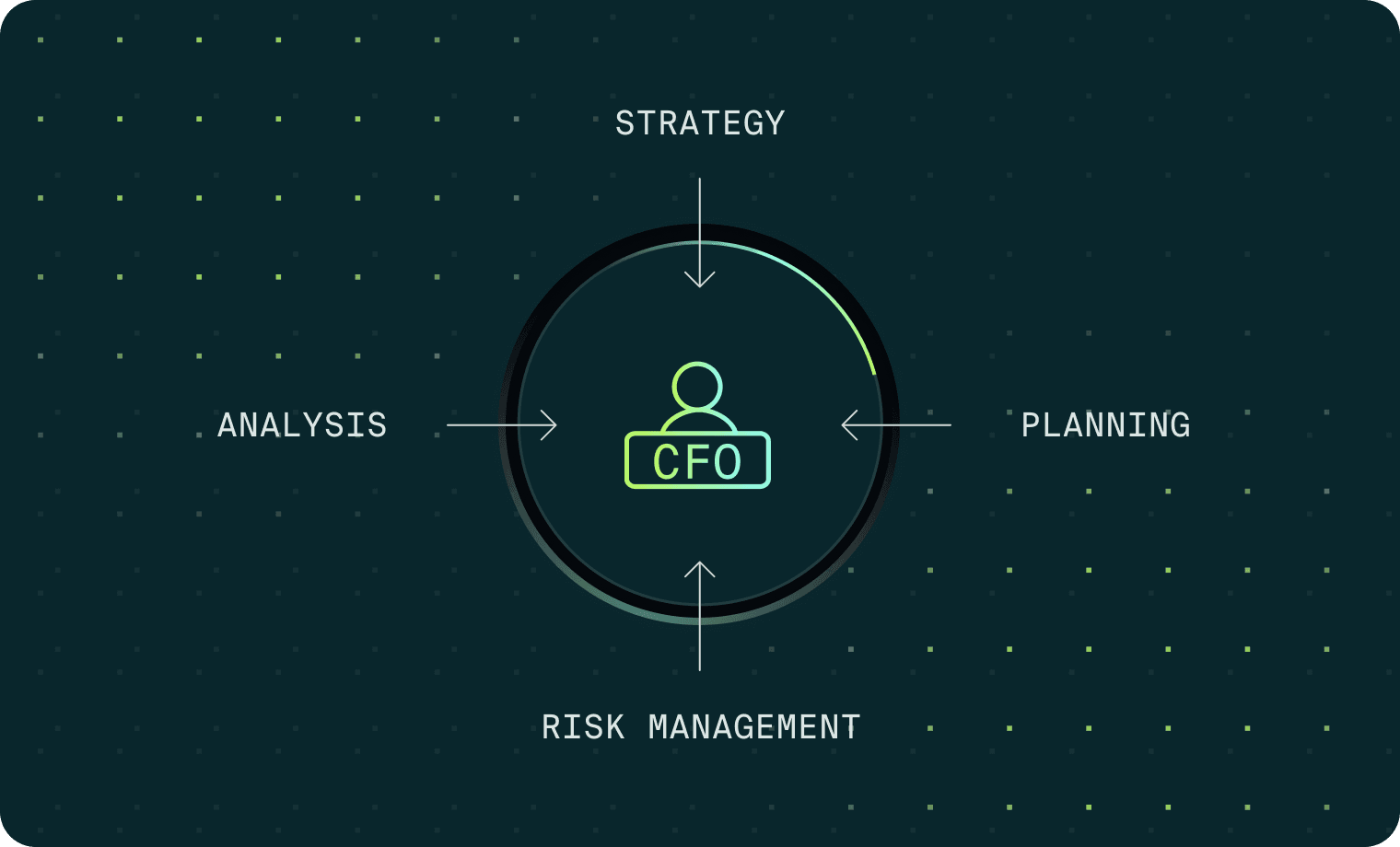
These Basic FP&A Metrics Will be even more Important in 2024

It might come as a surprise, but the metrics that financial professionals consider key can and do change, going in and out of vogue based on business models and climates.
For instance, up until a year or two ago revenue alone was the all important metric, at least in the world of software as a service. Losses could be absorbed, seemingly endlessly, so long as revenue rose at a fast enough rate.
With the change in the macro-economic climate, outlooks are more conservative and cash is king again. In this fiscal environment, metrics like break-even cost are coming more into play and revenue ops and FP&A teams are taking note.
Let’s take a look at a few important metrics and the story behind them:
Break-Even Analysis
Appetites for investments with long returns will likely diminish in 2024. That’s why break-even analysis that calculates when a company turns profitable will matter even more in 2024. The break-even point is the level of sales at which a company’s total revenues equal its total expenses, resulting in zero profit. By identifying the break-even point, a company can assess its financial viability and make informed decisions about pricing, production, and other aspects of its business operations.
The break-even cost analysis typically involves identifying all the costs associated with producing and selling a product or service, including direct costs (such as materials, labor, and shipping) and indirect costs (such as rent, utilities, and administrative expenses). The total cost is then divided by the unit price of the product or service to determine the break-even point in terms of units sold.
Break-even cost analysis is a useful tool for companies of all sizes and in all industries, as it helps to identify the minimum level of sales required to cover costs and achieve profitability. It is often used by startups and small businesses to determine the pricing of their products or services, and by larger companies to evaluate the financial performance of their business units and investment opportunities.
Net Present Value
Influential economist Irving Fisher was the first to introduce the concept of Net Present Value back in 1907, yet it took decades before it became mainstream. Nowadays, it’s a key metric that’s famous for being a favorite metric with the likes of Warren Buffet.
NPV calculates the difference between the present value of cash inflows and the present value of cash outflows over the life of an investment or project, taking into account the time value of money. If the NPV is positive, it indicates that the project is expected to generate more cash inflows than outflows and is therefore considered financially attractive.
Conversely, a negative NPV indicates that the project is expected to generate less cash inflows than outflows and is therefore not financially viable.
NPV is widely used by businesses and investors as a tool for making investment and project-related decisions, as it provides a more accurate representation of the potential profitability of a project than simple payback period or accounting profit. It allows investors to take into account the time value of money and other relevant factors that impact the future cash flows of a project, such as inflation, taxes, and risk.
Recurring Revenue vs Non-Recurring Revenue
Back in the day, customers would buy software solutions like, say, Microsoft Office the way they would any other product: with a one-off payment. When Office 365 came out in 2013, some buyers were baffled. Suddenly, they were asked to pay a subscription. It was a move in line with many other software solutions like Salesforce and Adobe that already made the transition to a subscription base model.
Fast forward a decade or so, recurring revenue is the standard for the vast majority of software companies – but not just. It’s become a preferred method of taking in income for a range of industries from groceries like Costco to bicycle rentals like Citibike.
The recurring revenue model is likely to only grow in popularity in 2024. Here are some reasons why:
-
Predictable and stable. Recurring revenue provides a predictable and stable source of income for a business, as it is not dependent on one-time sales or sporadic customer demand. This makes it easier for companies to forecast and plan their future finances.
-
Higher lifetime value. Customers who subscribe to a service or product on a recurring basis tend to have a higher lifetime value than customers who make one-time purchases. This is because they continue to generate revenue for the company over a longer period of time.
-
Improved cash flow. Recurring revenue provides a steady stream of cash flow that can be reinvested in the business, used to pay bills, and used to fund growth initiatives. This is particularly beneficial for startups and small businesses that may not have large cash reserves.
-
Better customer retention. Recurring revenue models encourage customer loyalty and retention, as customers are more likely to remain subscribed if they are satisfied with the service. This can reduce customer churn and the need for expensive customer acquisition efforts.
Cash Flow Analysis
Cash is king. Again. Whatever the longer term financial outlook might be, it doesn’t matter if you cannot make good on immediate financials. In 2024, it seems like we’re likely to see a lot of companies face cash-flow challenges. Here are some reasons why this measurement is so important:
-
Shows Liquidity. Cash flow analysis helps to show how much cash a company has on hand and its ability to meet its financial obligations as they become due. This is particularly important in situations where a company has short-term liquidity challenges, such as during a cash flow crunch or economic downturn.
-
Reveals Business Performance. Cash flow analysis provides insights into a company’s underlying business performance, as it focuses on the cash inflows and outflows related to its operations, investing activities, and financing activities. It can highlight areas where a company is generating or using cash effectively, and where improvements may be needed.
-
Guides Strategic Decisions. Cash flow analysis can help guide strategic decision-making, such as determining whether to invest in new projects or products, pay dividends, or buy back shares. By understanding the cash flow implications of different options, companies can make more informed decisions about how to allocate their resources.
EBITDA (Earnings Before Interest, Taxes, Depreciation, and Amortization)
This acronym, often pronounced as a single word, ee-be-da, at least in the U.S., is one of the first financial terms taught at business schools. It’s an important metric to make sense of a company’s worth especially during times of financial volatility. Here’s why:
-
Measures Operating Performance. EBITDA is a measure of a company’s operating performance, independent of financing decisions and accounting practices. It provides a clear view of a company’s profitability from its core business operations, allowing for easier comparison with other companies.
-
Facilitates Business Valuation. EBITDA is often used as a basis for valuing businesses, particularly for companies that are not yet profitable or have significant non-operating expenses. By excluding these expenses, EBITDA provides a more accurate picture of a company’s underlying operating profitability, which is important when estimating the value of the business.
-
Shows Financial Flexibility. EBITDA is often used by lenders and investors to assess a company’s financial flexibility and its ability to service its debt obligations. By focusing on a company’s ability to generate cash flow from its operations, EBITDA can provide a clearer picture of a company’s financial strength.
-
Enables Margin Comparison. EBITDA can be used to compare the profitability of different companies in the same industry. A higher EBITDA margin indicates that a company is generating more profit per dollar of revenue than its competitors.
These evergreens are likely to be at the forefront of FP&As in 2024.
As previously mentioned, while bookkeeping fundamentals remain the same, the popularity of the metrics derived from them oscillate. Financial professionals can get even more insights and toggle between various metrics more easily by using dedicated software solutions. Firmbase provides a one-stop shop for FP&A teams to stay better updated with, and have a deeper understanding of, their numbers so they take control of their futures and manage risk.


